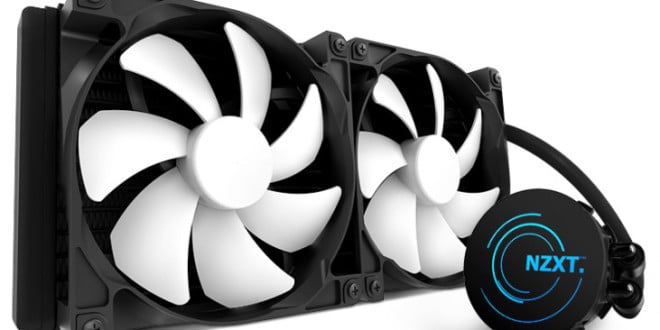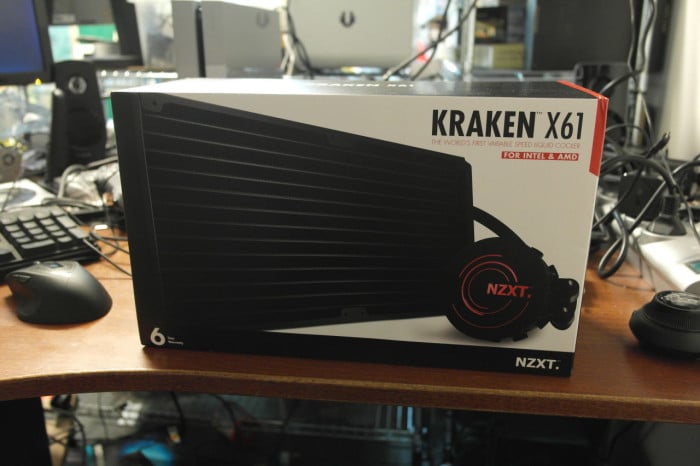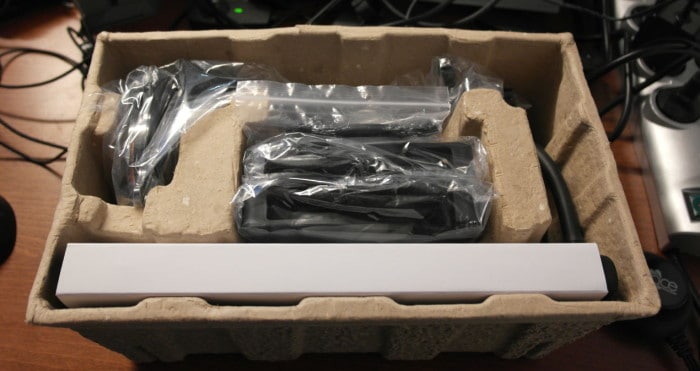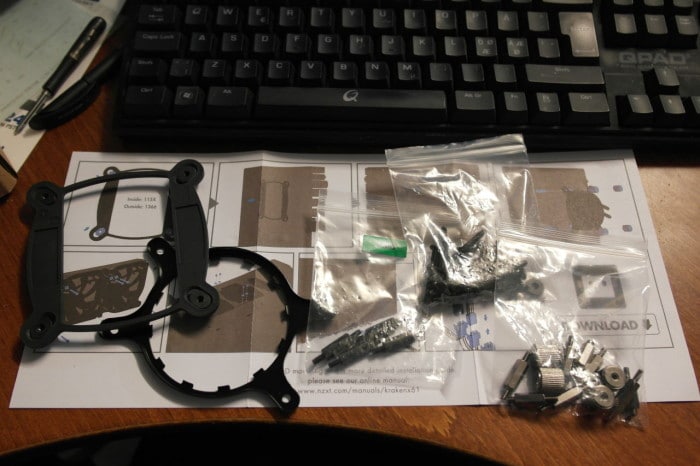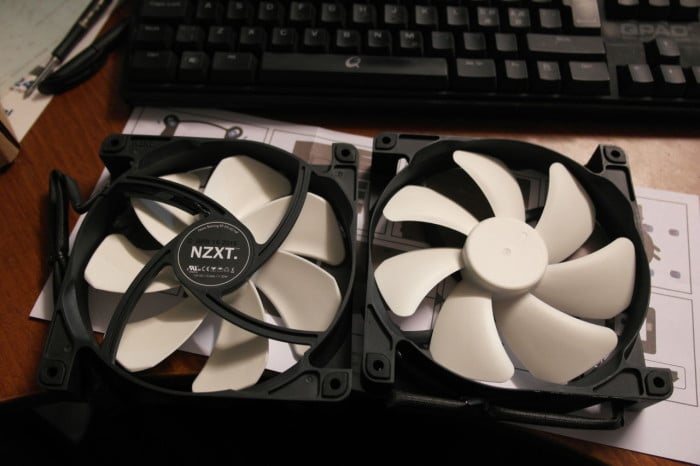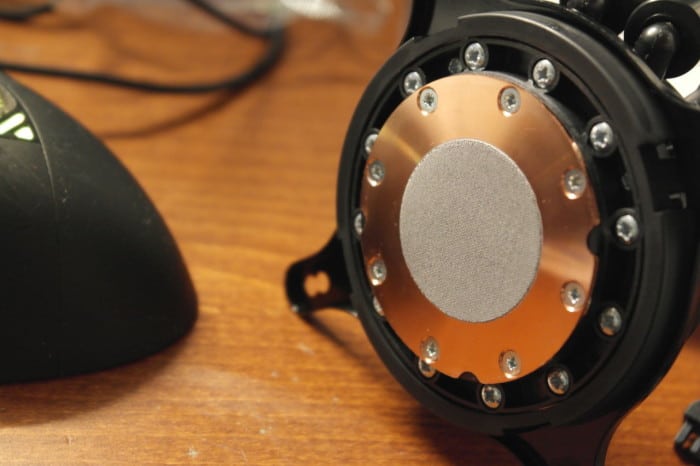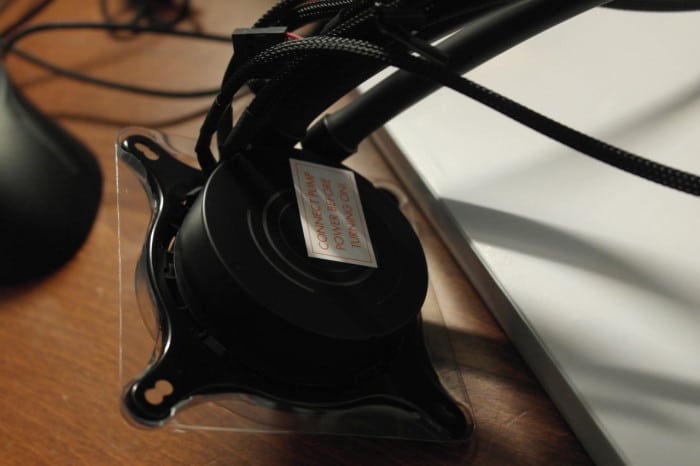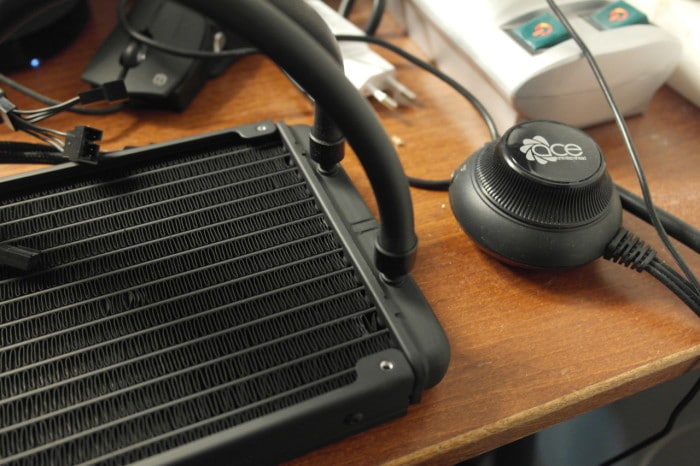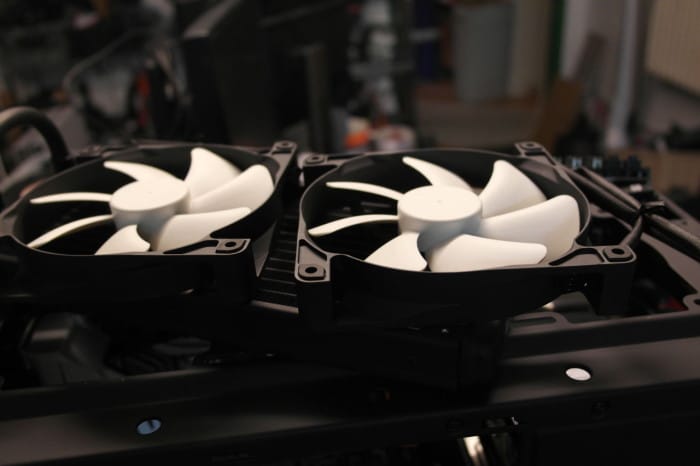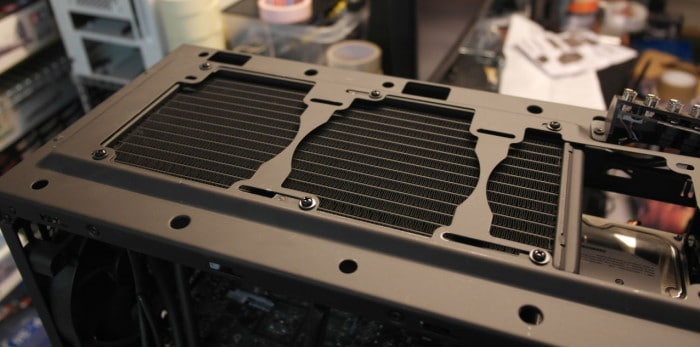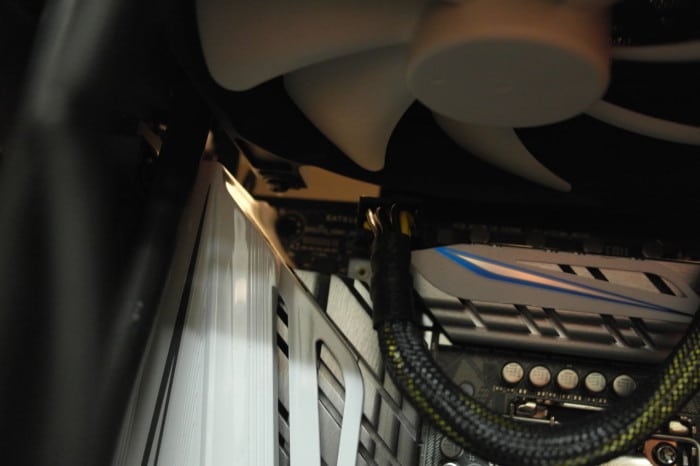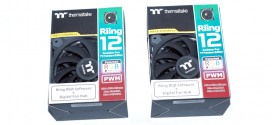Images of the Kraken X61
The Kraken X61 comes in a nice box that definitely makes it clear how big the radiator is. On the backside you get some specifications and features.
The content of the box are relatively well packed. We didn’t notice anything moving inside but we probably still would recommend making sure it is well packed around the box when getting it shipped via mail.
NZXT includes lots of different screws and several backplages to make sure you can use the Kraken X61 on different sockets. A tip is to make sure you save everything in the box as you might want to switch socket at some point and do not want to realize you lost the correct backplate and/or screws.
Two 140mm NZXT-fans are included. You could of course exchange them for other 140mm fans if you wanted but we guess the whole system is tuned to work great with the fans.
We tried to take a image to show off the copper surface of the heat-sink. While you can see some polish-marks the area is overall very smooth. The first time you use it you can use the included TIM but you can also remove it and put your own paste on there to improve the heat-transfer.
A nice warning that you should connect the pump to power before turning the system on. Otherwise your CPU will get very warm …
The radiator is about 312 mm long and 27 mm thick. This means you need to make sure your case can handle the dimensions of the radiator. This image also gives you an idea how thick the rubber tubing is.
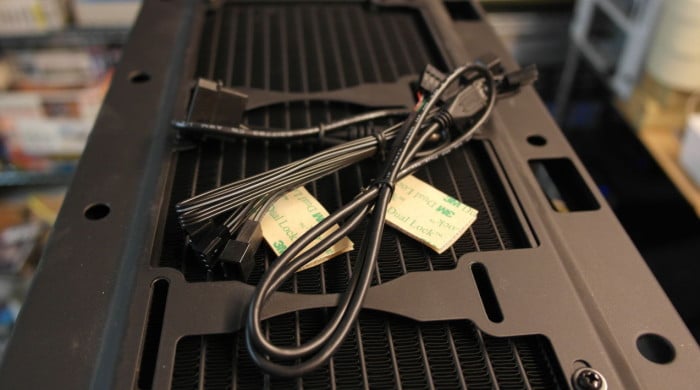
INSTALLATION
You of course need a nice large case to be able to fit this big baby. We were actually surprised that it didn’t fit in our Thermaltake Level 10 case (turns out it only takes up to 120x120mm radiators so we went out and bought ourselves a case to fit the cooler in.
There are several ways you can install a radiator and the fans. Some cases, including the NZXT Noctis 450 supports mounting the radiator both at the front, the top and the back. We decided to mount it at the top. Next the question is how to do with the air. Depending if you put the fans before the radiator or after the radiator you can choose a push or pull configuration where the air is either pushed through the radiator (the fan sucks in air from outside and pushes it through the radiator) or pulled through the radiator (in this scenario the fans pull air through the radiator). The difference between these two configurations are really quite small in our experience and it is more determined by your case than anything else. Next you need to figure out if the fans should pull in air from outside the case = cold air gets sucked in through the radiator and then you get a bit warmer air inside that is pushed out by other fans or if you want to have the fan drag out the air from inside. From what we have seen with other sites tests the difference here is also really small as you rarely get the inside of the case to be very warm. We ended up doing this; sucking out air from the case through the radiator through the top. Two 140 mm fans pulled in cold air from the front and the radiator plus another 120 mm fan at the back handled venting out the air from the case.
Here is a view of the radiator installed in the case. It is quite easy attaching the radiator with the screws but in a mid-tower case like the 450 Noctis we realized that it was quite tight inside the case with the tubing.
And here is the issue. It is quite tight to have a ATX-motherboard inside (we use a motherboard) and the 8-pin motherboard power connector will sit very near the radiator.
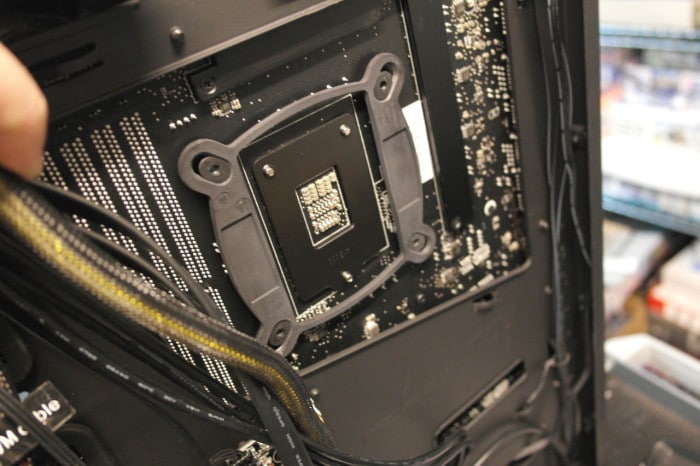
The fans from the radiator are connected to the pump, which can handle up to external fans, and then the pump is attached to the motherboard via a USB-header and a fan-cable to the CPU-header. The only pitfall we noticed is that only one of the 4 fan-connectors from the pump actually is a 4-pin connector which can control the fans so you need to make sure that this fan connector is used for one of the fans.
 Bjorn3D.com Bjorn3d.com – Satisfying Your Daily Tech Cravings Since 1996
Bjorn3D.com Bjorn3d.com – Satisfying Your Daily Tech Cravings Since 1996
